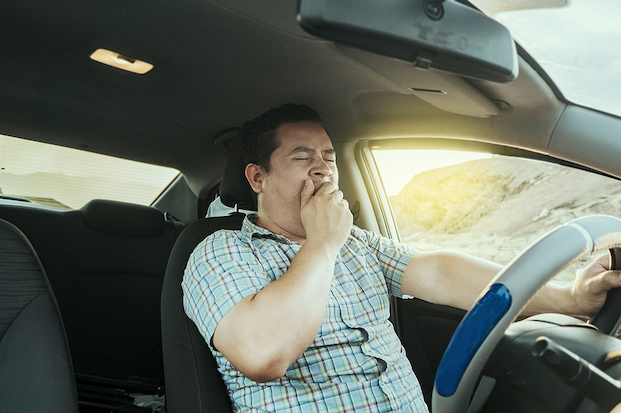Drowsy Driving? Don’t Do It
November 8, 2023
Don’t drive drowsy! Follow these tips to protect yourself and the others on the road with you from drowsy driving.

Drowsy driving can happen to anyone. A survey by the National Sleep Foundation revealed that over half of adults in the United States drive drowsy consistently, and 20% admitted to falling asleep behind the wheel in the last year. While young adults are at the greatest risk for driving drowsy, people of all ages have been known to drive while tired at one time or another.
Drowsy driving happens most commonly in adults with less than 6 hours of sleep per night. It can also affect people who have unusual sleep patterns for their occupation, people who have combined alcohol and medications, and people with sleep disorders.
You can help protect yourself, your loved ones, and the other people on the road by avoiding drowsy driving. Here’s how.
Know the Signs of Drowsy Driving
Knowing the signs of drowsy driving can help you decide when it’s time to get off the road.
- Hitting the rumble strip
- Head nodding off
- Yawning repeatedly
- Unable to concentrate, daydreaming while driving
- Missing your exit
- Drifting between lanes
How to Avoid Drowsy Driving
Of course, the best way to avoid drowsy driving is to get enough sleep before leaving. However, getting enough sleep before every car trip is only sometimes possible. These tips can help you avoid drowsy driving.
Drive With a Buddy
Driving with a partner gives you someone to talk to, which can help relieve sleepy feelings while driving. Going with a buddy also makes it possible to switch off drivers periodically. Have your buddy drive if you’re showing any signs of drowsy driving or have been driving for several hours in a stretch.
Read Medication Warnings
Some medications make it dangerous to operate heavy machinery; others should never be taken with alcohol. Read all medication warnings before driving while on medication.
Avoid Driving When You Would Usually Be Sleeping
Your body is programmed to sleep at certain times of the day. Driving at these times could be more challenging than usual due to your body’s inclination to wind down for sleep. Avoid driving during normal sleeping hours. Get off the road and get rest until your regular wake time.
Take Breaks
Take breaks from driving every 100 miles or every two hours, whichever comes first. During your driving break, get coffee, get out, walk around and go to the bathroom. Remember that drinking coffee can help increase your alertness in the short term but will only increase your attention over a short period.
Know When to Stop
If you’re unable to concentrate, feeling the effects of drowsy driving despite taking many breaks, or if you’ve been up for 24 hours or more, know when to get off the road. You don’t have to check into a hotel to get some sleep. Find a rest stop where you can shut your eyes for a little while.
Listen to a Favorite Podcast
Listen to audio programming that keeps you engaged while on your journey. You can also listen to music that helps you feel energized.
Avoid the Rush
Take your time reaching your destination. Get there safely, even if it means getting there a little slower than you prefer.
Protect Yourself With Auto Insurance
Drowsy driving is dangerous. Experts believe drowsy driving can be just as bad as drunk driving and may be responsible for over 20% of all fatal car crashes yearly. Avoid drowsy driving at all costs.
To doubly protect yourself, keep your auto insurance up to date. Remember that auto insurance can help repair your vehicle in the event of an accident. Call your insurance agent today.



